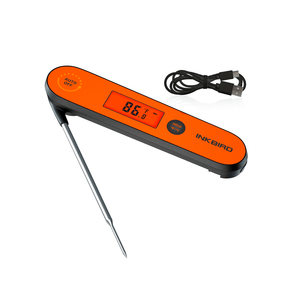Explore Our CO2 Controllers

What Can a CO2 Controller Do

With sensitive NDIR sensor, the INKBIRD CO2 controllers can continuously monitor CO2 levels, enabling timely interventions to maintain an ideal environment for plant growth and productivity.

When the CO2 concentration falls below the ideal range or set threshold, the CO2 controllers automatically trigger the connected CO2 generator to turn on and start releasing CO2 into the air.

When the CO2 levels exceed the set limit, the CO2 controllers automatically activate the ventilation system to maintain a balanced and healthy environment.
Wide Range of Applications

Want Some Expert Growing Tips?
Explore our blog dedicated to cultivating a vibrant and flourishing garden! We believe that with our advice and a little patience, anyone can nurture beautiful plants.
What Our Customers Say












Why Choose INKBIRD
Frequently Asked Questions
How do INKBIRD CO2 controllers work in grow rooms?
INKBIRD CO2 controllers continuously monitor the CO2 level in the growing area. If the CO2 concentration falls below a specified threshold, they automatically activate the CO2 regulator or generator to release more CO2 until the desired level is reached. Conversely, if the CO2 gets too high, they turn on the ventilation to prevent damage to the plants.
What sensor do INKBIRD CO2 controllers use?
INKBIRD CO2 controllers use NDIR (Non-Dispersive Infrared) sensor to measure CO2. NDIR sensors have longer lifespan compared to electrochemical ones since they do not burn out or degrade when exposed to gas.
What are ideal CO2 levels for plant growth?
The ideal CO2 levels for plant growth can vary depending on the specific plants, but a general guideline is to maintain levels between 1,000 and 1,500 ppm. While some plants may thrive at even higher levels, it's important to monitor for signs of CO2 toxicity, which can occur above 2,000 ppm. For seedlings like tomatoes, cucumbers, peppers and lettuce, a lower range of 800 to 1,000 ppm is recommended.
Will using a CO2 controller improve my plant yield?
Yes, using a CO2 controller can potentially lead to increased plant yield. Maintaining optimal CO2 levels helps improve photosynthesis, which means your plants can grow healthier and you might end up with larger harvests. But remember, CO2 is just one factor in a complex growing environment — nutrients, light, water, and plant genetics also play significant roles.
What are acceptable CO2 levels in indoor spaces?
According to several health and safety organizations like OSHA and ASHRAE, the acceptable CO2 levels for indoor environments are as follows:
- 400-1000ppm: Typical indoor CO2 concentration
- 1000-2000ppm: Drowsiness, headaches, and decreased cognitive function
- 2000-5000ppm: Dizziness, shortness of breath, and increased heart rate
- Above 5000ppm: Confusion, loss of consciousness, and even death
























